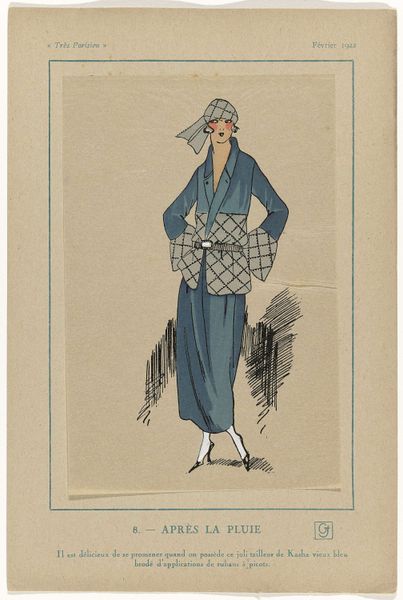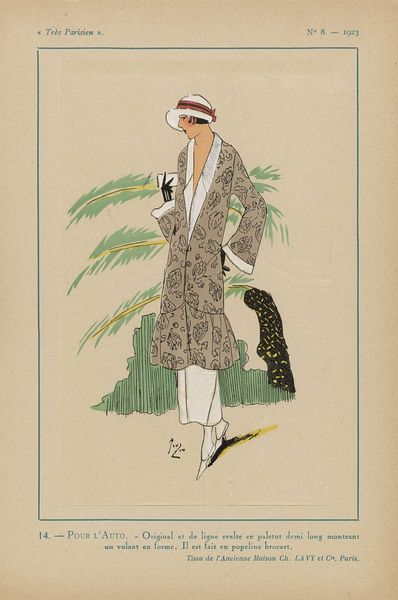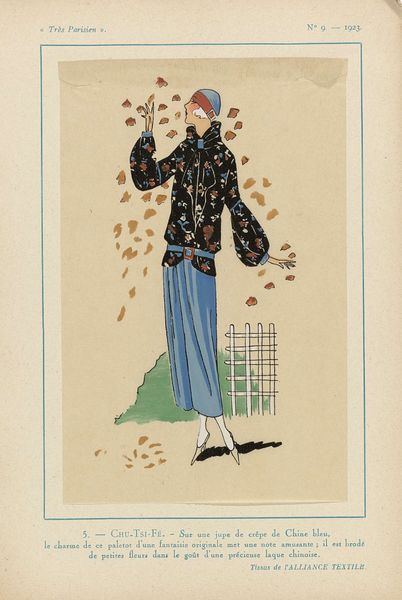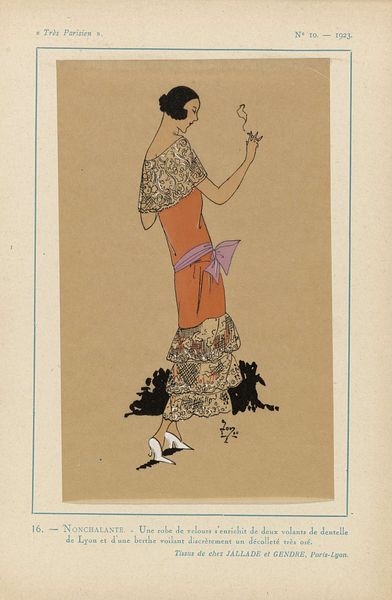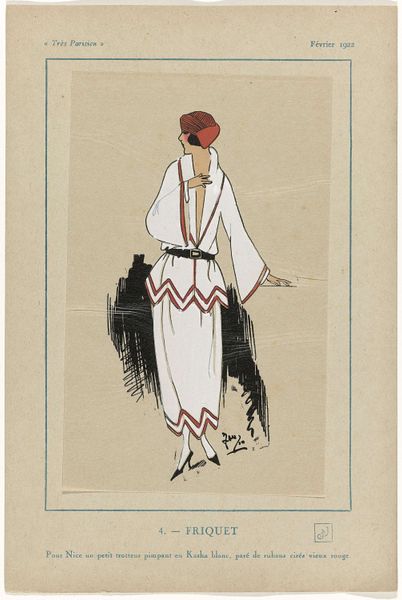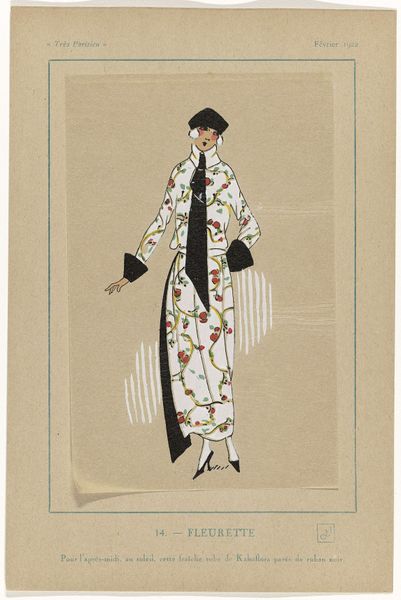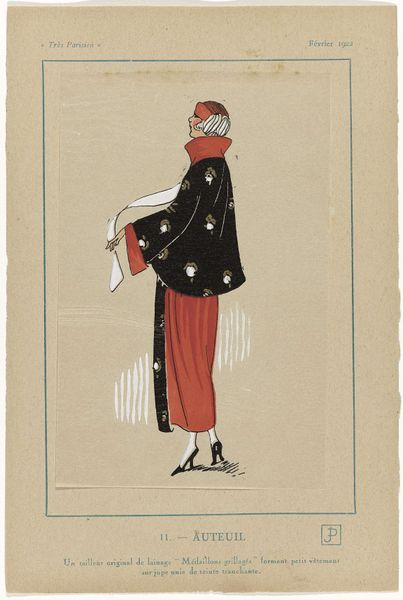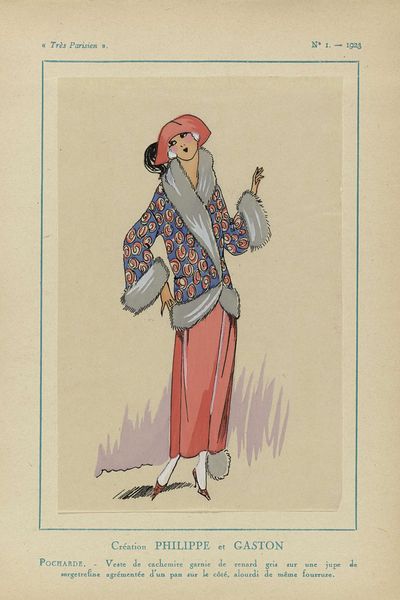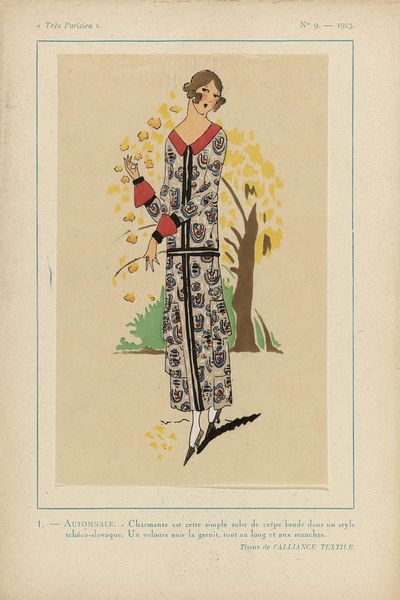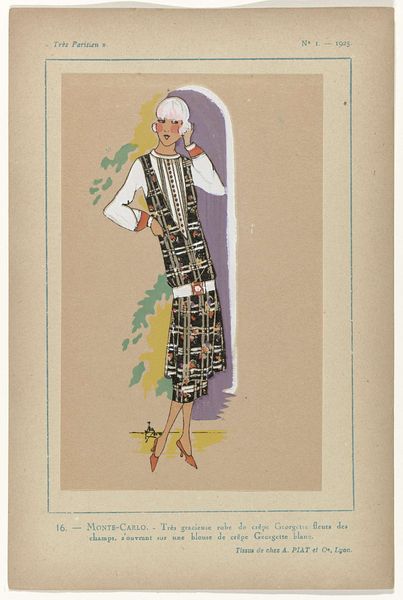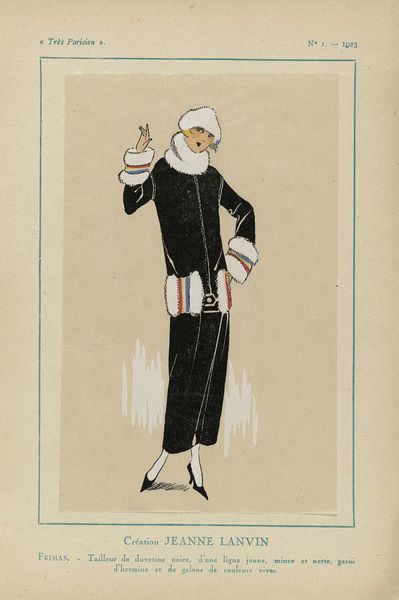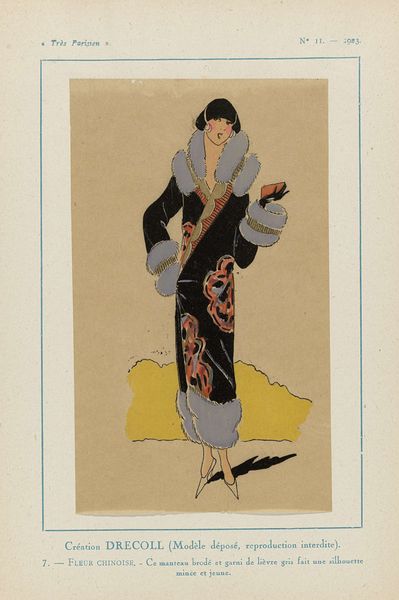
Dimensions: height 269 mm, width 180 mm
Copyright: Rijks Museum: Open Domain
Editor: So, this illustration is called "Très Parisien. La Mode, Le Chic, L’Elégance" from 1923. It’s attributed to Anonymous and it’s a watercolor and ink piece at the Rijksmuseum. The woman's outfit really grabs me – it just screams 1920s tennis club chic! What catches your eye? Curator: Ah, yes, utterly divine! It’s like stepping into a breezy afternoon just after a set. What enthralls me is how it embodies the spirit of the Garçonne—the modern woman emerging, free from corsets, yet bound by her own unique code. That loosely fitted overcoat… does it strike you as hinting at a quiet rebellion? The colour palette, muted yet alive, also contributes. A whisper, not a shout. Tell me, does that composition evoke Jazz Age sensibilities? Editor: Definitely! The geometry of her clothing and the stark contrast against the tennis net totally says Jazz Age. I was reading about Art Nouveau's influence at the time too… do you think we’re seeing the tail end of it here? Curator: Hmmm, that's like asking if the echo fades before the music dies. A subtle vestige lingers perhaps, yet modernity has clearly set its course. Look at that almost impudent gaze of the tennis player. It is not coy; there’s self-assuredness, as if to say: “I sweat, I play, and I am utterly elegant." Do you not find her tennis ball curiously evocative? Editor: I hadn't thought of it that way! To me, it just looked like part of the tennis scene. Curator: But does it not echo the roundness of the pearl on her headpiece? Is it a tennis ball, or an existential symbol playfully tossed into the illustration? Sometimes art teases. That is its privilege! Editor: I guess so! Now that I'm looking closely, I wonder if the pearls weren't meant to catch some of the light. Well, thanks for untangling all that for me! I will never look at tennis the same way again. Curator: Oh, you're most welcome! I now believe I have glimpsed how an eye filled with youthful curiosity reinterprets art. Wonderful!
Comments
rijksmuseum about 2 years ago
⋮
Très Parisien promoted itself as chic and elegant. Between 1920 and 1936 it presented creations by such couturiers as Chéruit, Premet, Philip et Gaston, and Lanvin. The young, svelte models are all ultra-modern, shown talking on the phone, smoking and playing tennis. The illustrations also show that over the course of the 1920s, skirt lengths had risen to just below the knee, before dropping back down to calf length in the 1930s. The small plates were printed on transparent paper using a stencilling technique known as en pochoir and then hand coloured; many of them are unsigned. The signature ‘Joujou’ belonged to Germaine Paule Joumard, who was the director of Très Parisien, as well as one of the magazine’s illustrators.
Join the conversation
Join millions of artists and users on Artera today and experience the ultimate creative platform.
